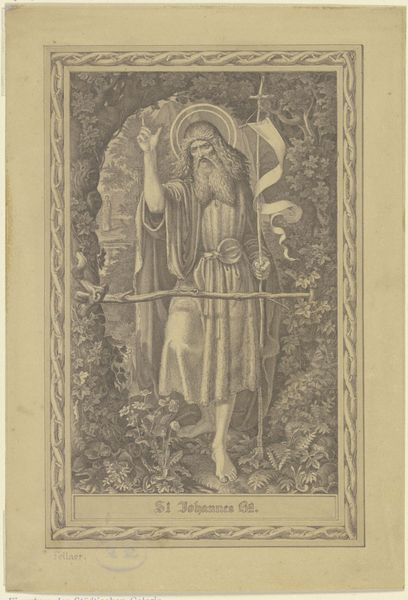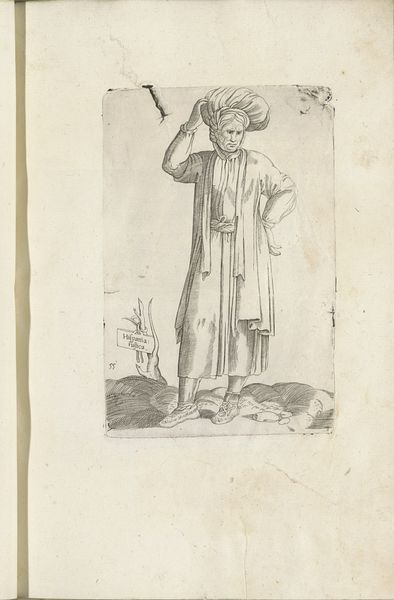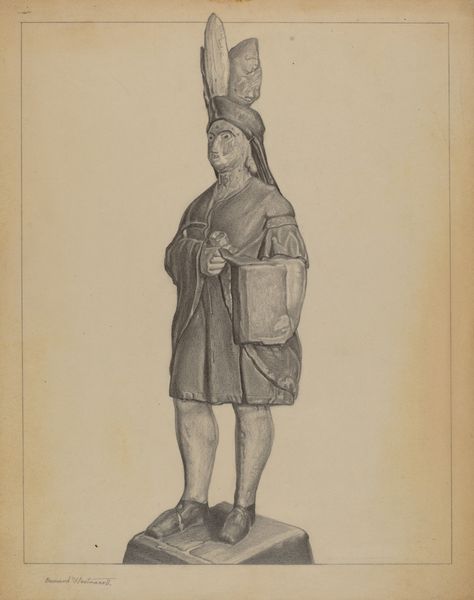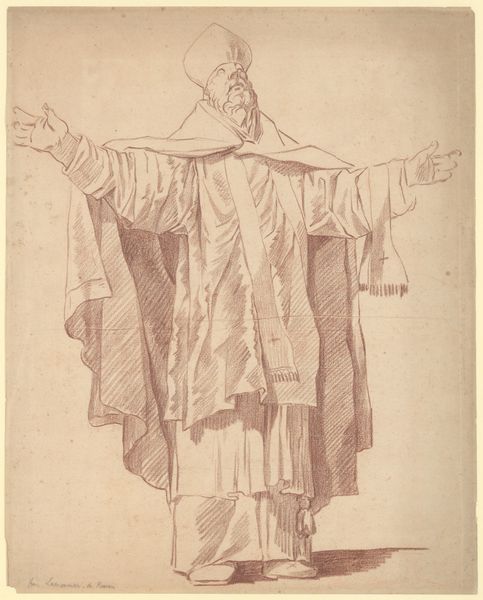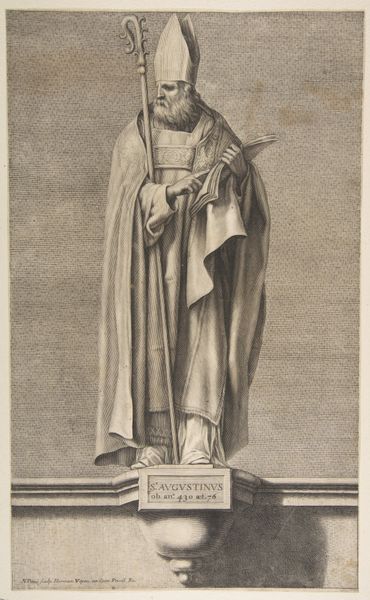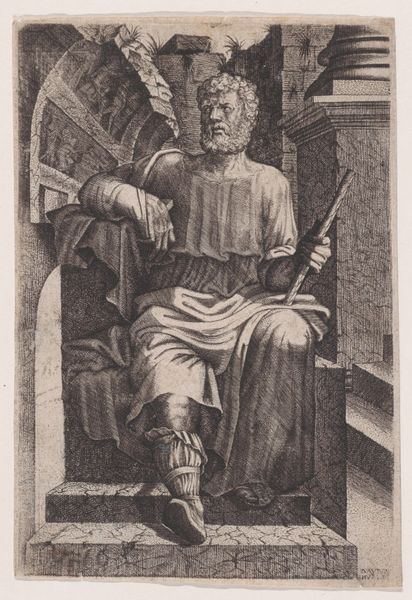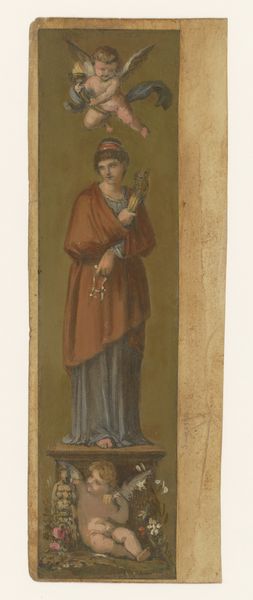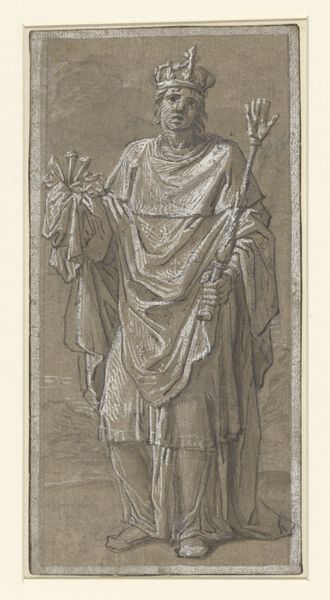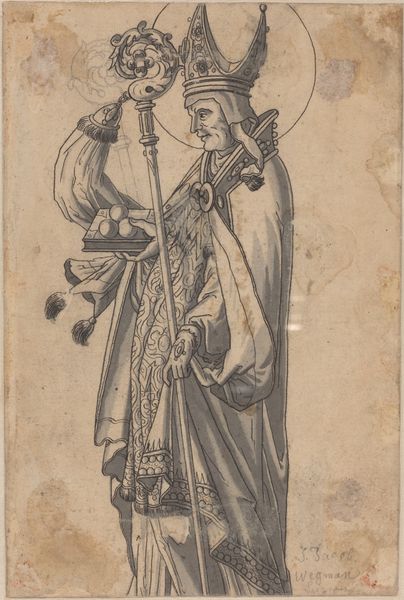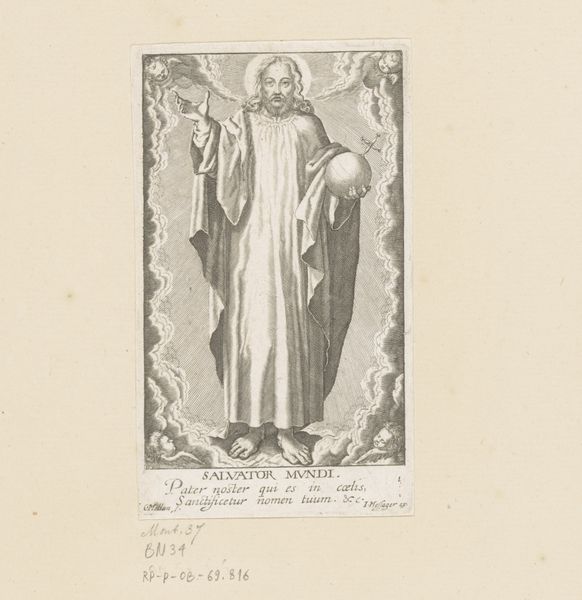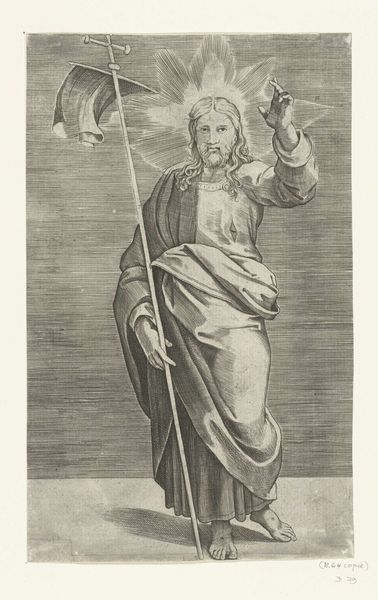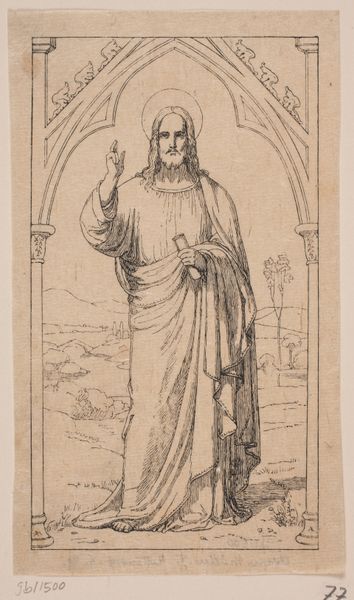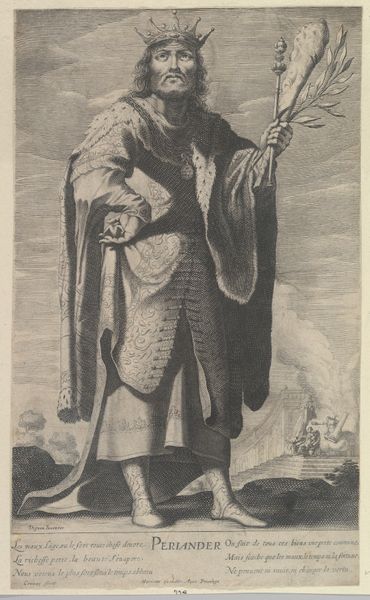
drawing, print, engraving
#
portrait
#
drawing
# print
#
romanticism
#
history-painting
#
academic-art
#
engraving
Copyright: Public Domain
Curator: Here we have Johann Heinrich Hasselhorst's rendering of Kaiser Friedrich II in the Kaisersaal at Frankfurt. Created as a print and drawing, this work offers a romanticised view of the emperor. Editor: It feels like a carefully staged presentation of power, even bordering on idealized. I mean, look at the crisp lines and overall verticality. But I can’t help but wonder about the intended audience, who would consume such an image? Curator: Indeed, the linearity and composition directs the eye upward. The engraving exemplifies Academic art with precision. Hasselhorst focuses on rendering the textures of the Kaiser’s robes, the details of his crown, the feathers of the falcon...it’s an exercise in replicating textures with line and shadow. Editor: Replicating yes, but not interrogating! What does it signify that Hasselhorst chooses to depict Frederick with a falcon—the noble bird associated with aristocracy and sovereignty. What power structures are being reinforced here? Was it commissioned and circulated at a specific moment? Was this work to simply celebrate or subtly legitimize dynastic succession or contemporary politics? Curator: You're right to focus on the falcon. One might see it, through a structuralist lens, as a symbol of the Kaiser's mastery over nature, thus reinforcing his perceived right to rule. The details of the landscape in the background, mirroring the formality of the Emperor, seem less significant to the semiotic construction. Editor: I am also intrigued by the crown of laurel—does it simply emphasize his triumph, or subtly point to an aspirational connection to classical imperial leaders like Julius Caesar? To read against the grain is to perhaps also view the landscape—subtly presented as it may be—as symbolic of the lands and people over which Frederick presided, whether justly or unjustly. How complicit are we, as viewers, in accepting these romanticised or glorified images? Curator: Your perspective reveals the richness beneath the surface. Hasselhorst’s skill invites us to look beyond the aesthetics and consider historical context. Editor: Agreed. Now I feel an even deeper appreciation, realizing how a seemingly straightforward depiction demands so much more consideration of its time.
Comments
No comments
Be the first to comment and join the conversation on the ultimate creative platform.
